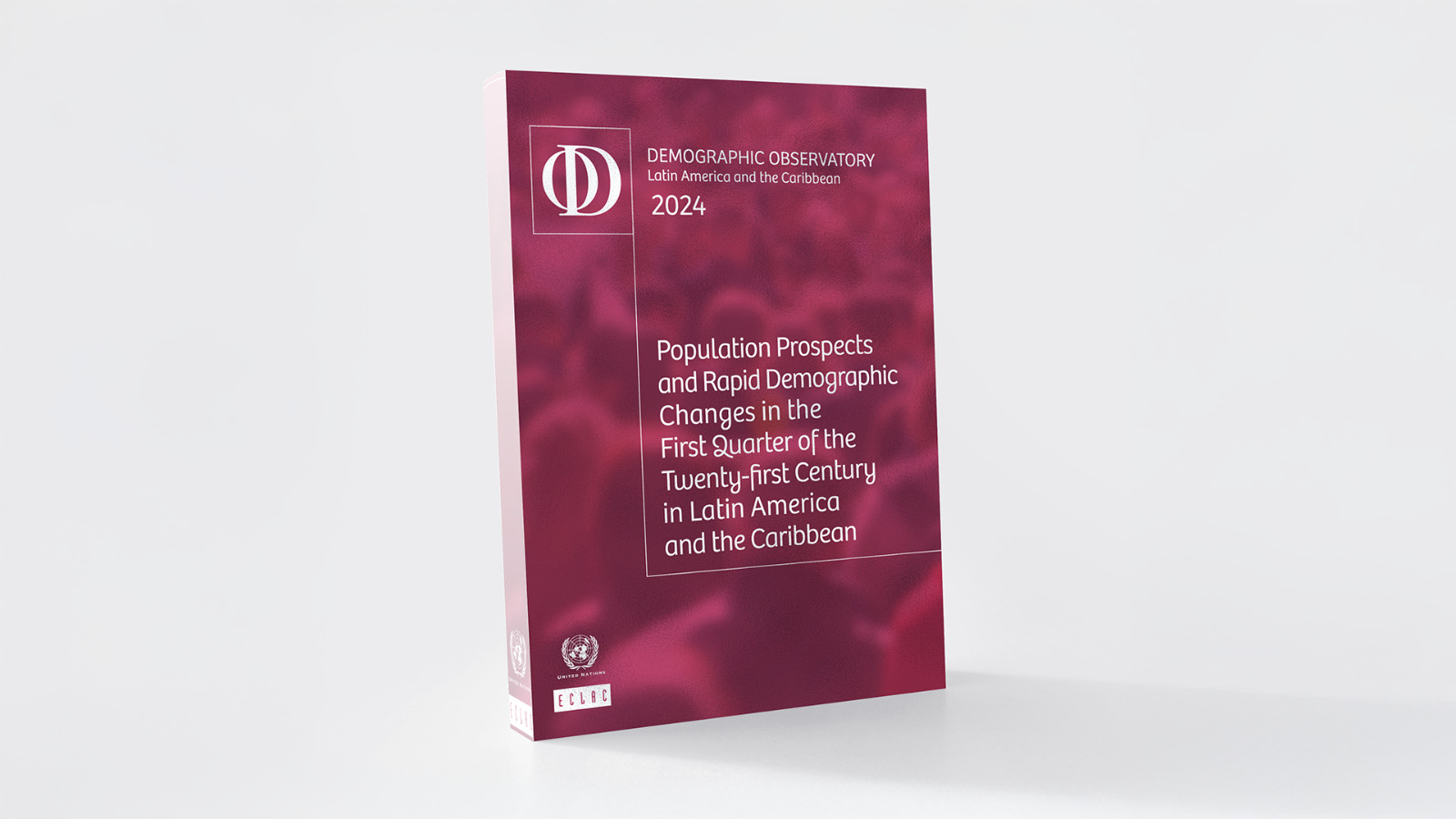Population Growth in Latin America and the Caribbean Falls Below Expectations and Region’s Total Population Reaches 663 Million in 2024
Work area(s)
ECLAC’s 2024 Demographic Observatory report, launched today, examines the acceleration of demographic changes in the first quarter of the 21st century in the region, along with the implications of ageing for the labor force and care.

In 2024, Latin America and the Caribbean’s population reached 663 million people, 3.8% less than what had been forecast in the year 2000, when estimates pointed to a total of 689 million people. At that time, it was estimated that fertility and mortality rates in Latin America and the Caribbean would be higher than what was effectively recorded between 2000 and 2023, considering trends from the previous decade and what occurred in other regions of the world. Also, these initial projections did not anticipate the increased volume of migration flows in recent years or the significant demographic changes seen during the COVID-19 pandemic.
Currently, the region’s population is projected to peak at approximately 730 million in 2053, according to the 2024 Demographic Observatory: Population Prospects and Rapid Demographic Changes in the First Quarter of the 21st Century in Latin America and the Caribbean, released today by the Economic Commission for Latin America and the Caribbean (ECLAC).
The document, prepared by the Latin American and Caribbean Demographic Center (CELADE)-Population Division of ECLAC, emphasizes that the growth rate of the region’s population is ever lower. In the 1960s, annual growth rates topped 2.5%. However, starting in the middle of that decade, a decreasing trend began, due especially to declining fertility. Although the 2000 revision foresaw that this downward trend would continue, the 2024 data shows that, in actuality, the decline was faster than anticipated.
This accelerated demographic transition has prompted major shifts in the age structure of the region’s population. In 1950, around 41% of the population was under 15 years of age; today, that proportion has fallen to 22.5%. At the same time, the adult population between 15 and 64 years of age went from accounting for 55.6% of the total population in 1950 to representing 67.6% in 2024. It is forecast that in 2050, around 18.9% of the region’s population will be made up of people over 65 – approximately double the proportion observed in 2024 (9.9%). This will mean an increase from the 65.4 million people over 65 years of age in 2024 to an estimated 138.0 million in 2050.
The 2024 Demographic Observatory stresses that the rapid demographic shift that has been observed in Latin America and the Caribbean presents challenges and opportunities for the region in the context of accelerated population ageing, with a significant increase in the population’s median age. In 1950, the report indicates, the median age of Latin America and the Caribbean’s population was 18; by 2024, that value had risen to 31 years of age; and by 2050, it is forecast that the median age will be approximately 40.
“The birth rate has declined more quickly than what was expected at the start of the century, and neither the rise in mortality due to COVID-19, nor the increase in migration flows, was foreseen at that time. We at ECLAC call for promoting the population’s healthy ageing and offering everyone, especially lower-income groups, access to healthcare and social protection systems that would reduce the impact of greater demand for care on families,” stated José Manuel Salazar-Xirinachs, ECLAC’s Executive Secretary.
The change in the population’s age structure and the persistent decline in fertility to below-replacement levels pose additional challenges to those already existing in Latin America and the Caribbean in terms of socioeconomic inequality and access to state-provided goods and services. Ageing has an impact in all areas of public policy and, in particular, entails an increase in demand for long-term care services, which poses challenges but also opportunities.
It is crucial that the situation of women be given special consideration, since they are generally the ones who absorb the work of caring for children and older persons within families, ECLAC’s Executive Secretary emphasized.
On a separate note, estimates for the 1980-2023 period reflect an increase in the total number of people in the labor force in Latin America, especially in urban areas. Projections for the 2024-2050 period indicate that this increase will continue in the coming years, although at a slower pace of growth.
According to the Demographic Observatory, there are around 332 million people in Latin America’s labor force in 2024, with around 274 million found in urban areas. The urban labor force will continue increasing, reaching 337 million people by 2050 out of a total of 395 million. Meanwhile, it is forecast that growth in the rural labor force will stagnate, a phenomenon already observed in the last decade.
According to ECLAC, these changing demographics constitute a critical structural transformation that requires rethinking approaches in numerous policy areas in order to move towards more productive, inclusive and sustainable societies in Latin America and the Caribbean.
Related content
Related link(s)
Country(ies)
-
Chile
Contact
Public Information Unit
- prensa@cepal.org
- (56 2) 2210 2040


